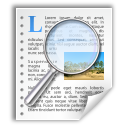Free readability tools to check for Reading Levels, Reading Assessment, and Reading Grade Levels.
[ HOME ] Check Your Readability: Check Text Readability NOW  Free Readability Calculators Learn about Readability Formulas: Dale-Chall Formula Flesch Reading Formula The Fry Graph SPACHE Formula [ View All ] Readability Help: [ View All Articles] Writing Tips: [ View All Articles] English Writing Products: StyleWriter software Site Map About Us Contact Us Write for Us |
Planning A Simple Newsletter - 10 Tips To Get You Started Most people with a computer can whip up a newsletter in minutes with whatever word-processing or desktop publishing software they happen to have installed in their hard drive. But coming up with a readable and interesting paper is more than filling a page with "bells and whistles". Create a newsletter that people will want to read by keeping it simple and following a few easy tips.
1. Purpose: presumably you already have a purpose for producing newsletters be it a sporting club or team, keeping in touch with family, work, any other interest or community group. Defining the purpose before you start will help keep the newsletter focussed and streamlined. 2. Content: This is the news, articles and announcements you are going to fill your newsletter with. You can write your own, request contributions or "borrow" from other sources. Note that if you borrow, then you also have to credit the original author and source, and obey any copyright restrictions they may have placed on their work. "Not for reprint" means Not For Reprint. 3. Images: Use only print quality images [300dpi], ensure they are related to the content they are placed beside and avoid overkill. Printing images uses up much more ink than text and too many on a page make it too busy for the reader to enjoy properly. Keep it simple. Copyright also applies to images you borrow. Plus, if using people as the subject, they may not want their picture published for all to see. Get their permission first and you'll save yourself headaches later. 4. Layout: On an A4 size page, two columns are better than three. Only one column, especially if the article is long or your font size is small, can strain the eyes. White space, the space between columns, lines, images, headings, is important for the overall look and readability of your pages. You're after balance of text, images and blank space not a page crammed full of information. 5. Headers, fonts & formatting: No more than two different fonts is the general rule for any kind of publication. Arial and Arial Black [etc] are the same font so you could use both of these and, say, Curlz. However, simplicity and readability is the key for a professional look. Fonts like Curlz have been done to death so go for one that's modern, classic, and suits the topic of the newsletter. Beware of overdoing text formatting. Sub-headings are fine in normal case and bold, or small caps and bold. Main headings such as article titles can be larger, but still normal case. All capitals is harder to read and slows down comprehension. Avoid using italics, except when referring to titles of books, journals or any other sort of artwork. Note that if you start your newsletter on one computer using a fancy font and then switch to another computer, the second one may not have the same fonts.
6. Printing: Unless your distribution is going to run into the hundreds [over, say 400] and/or you have a thick newsletter, photocopying is probably the easiest and cheapest option for printing. Consider the trees [and your budget] and copy on both sides of each page. Colour copying is more expensive than black and white. On a good photocopier, black and white will come out fine, but avoid using dark images if this is the option you are going with. Keeping your newsletter to as few pages as possible will also contribute to keeping printing costs down. Turning the whole thing into an electronic newsletter will make printing costs and concerns, null and void. 7. Distribution: For electronic versions, you can either send via email or post it to your website. The most common way to send a newsletter of this sort is as a .pdf file. Most people have .pdf readers and you can make your newsletter as colourful and creative as you want. You can also use the body of your e-mail as the newsletter, but this can have formatting problems. Keep your files small [you have a choice of small, standard, press and high quality files during their creation] to avoid blocking email boxes or using up precious web space. Print versions can be posted or hand-delivered depending on the distribution area of the newsletter. To help keep costs down when posting, request that recipients pay a postage fee or even send in stamps to cover postage. 8. Record keeping: Always keep a list somewhere of who you are sending your newsletter to and keep it up-to-date. Start a file to keep past issues. Keep track of article subjects, titles and sources. 9. Extra bits: Quotes, jokes, handy weblinks, resources, public notices all help to add extra interest and variety to your newsletter. They also make great fillers! 10. Practice makes perfect: As can be said for anything we undertake, practice, practice and then practice some more. Don't be scared to try new techniques or improve on old ones, to streamline clunky formatting or to use a great hook that will catch and hold your readers from one issue to the next. People love to read newsletters; bite-size chunks of news tailored to their interests and in their hands because they want it there. Your readership is out there waiting for you. Get publishing! About Readability >> READABILITY FORMULAS New Dale-Chall - Flesch Reading Ease - Flesch Grade Level - Fry Graph -Gunning FOG - Powers-Sumner- Kearl - SMOG - FORCAST - Spache  StyleWriter software: use it to write better content! Download your free trial! |
|
|
||